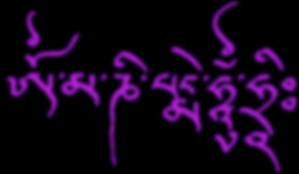Many years ago, I started a blog named Juxtaposition Ezine. Here’s a column I from a series I was working on, until I finally folded the blog.
Visitation #11
New Gamelan/New York
Gamelan Son of Lion
(GSOL CD-1)
Gamelan Son of Lion is both a New World gamelan and a new music group. Not only are GSOL continuing tradition, but they are contributing and extending it by writing new music for the ensemble. Although the entire CD is noteable, here’s some highlights:
- Laura Liben’s Piece for Peace in the Middle East features tuned bamboo angklung rattles in different time signatures.
- Mark Steven Brooks contributes some short movements in Four Dances for Balinese Angklung.
- A digital gamelan of sampled wine glasses perform Kebyar Leyak by David Simons. Spooky vocal sample snippets from a TV documentary on UFO’s are included (I recognize this material!).
- The clarinet in co-founder Daniel Goode’s Slendro Clarinet makes one forget that the clarinet is from Europe!
- Jody Kruskal, David Demnitz and co-founder Barbara Benary also contribute pieces.
One of few ways of exposing yourself to the percussion ensemble music of Indonesia as filtered through the West. Highly recommended.
Hopefully someday the Gamelan in the New World lp’s on Folkways will be re-released on CD.
Writhing to the Occasion
Mark Steven Brooks
(Elaterium Records EL-6)
Gritty improvised electronics from the producer of the Gamelan Son of Lion CD (see first review, above). Cubic (in three parts) for computer generated sound brings us electronic night life and various other alien landscapes. In Prelude and Solo #3 for digitally processed theremin, Brooks caresses the instrument to produce sliding tones and then releases them into the ether, echoing and blooming into a cloud of processed reverb. No Still Point and Threnody are both for digital synthesizer yet seem influenced by his work with the theremin. A refreshing leap beyond the usual. Jump in – the electronic soup is great!
Spin-17
(Quodlibet QLCD001)
50:56 minutes of pure fun and mayhem. A free wheeling skip through rock, jazz, free improv, music concrete, dj turntable frennzy, skronk opera, studio manipulation, toy instruments and anything/everything else…twisted electronics, 20th century clarinet, heavy guitar, tapes, tape manipulation and turntable acrobatics by Ed Chang vs. vocal extremities, turntable gymnastics, toys, gizmos and more heavy guitar by Motoko Shimizu. Includes a nod to John Cage with a performance of Aria. Not for the weak of heart – nothing stays the same for more than a few seconds – take a step beyond and fall off the edge. Recommended.
Original Masters – Night Passage
Alan Lamb
(Dorobo 013)
These last three new recordings are by people who have been reviewed on this site before. Telegraph wire sound artist/musican Alan Lamb’s Night Passage has finally been released, the de-mixes by studio wizards Ryoji Ikeda, Thomas Köner, Lustmord and Bernhard Günter having been released a while back. Lamb’s music is found on abandoned telegraph wires and recorded.
The best stuff is edited in to these recordings without any studio manipulation. What you hear is the original recording of wires shifting in the wind. See the Juxtaposition Ezine review of his Night Passages de-mixed for more info.
O°C
Ryoji Ikeda
(Touch TO:38)
Ryoji Ikeda is back with his follow up to his +/-, this one is called O°C. Zero degrees centigrade? Minimal reverb, minimal samples. Full of beating, beeping, ticking, ambient moments that give way to thumping electronics. A truly gifted use of silence and hard edged electronics. His last cd made Juxtaposition Ezine’s Notable releases of 1997. “Sine tone madness. Extreme beep music. Really high notes. Really low notes. Really cool too.” “I love it. Zen techno rock garden of boops and drones. Sort of like a friendly MRI.”
Outland III
Pete Namlook & Bill Laswell
(FAX PW 37)
And last, but not least…is the last in the Outland trilogy of collaborations between FAX label guru Pete Namlook and bassist/producer Bill Laswell – Outland III. Some signature Namlook beats…some timeless floating ambient. Not quite up to the standards of Outland I, this sounds like Laswell wasn’t there for the mix down, his trademark thumpy bass just isn’t thumpy enough. Is this the end of the union of Namlook & Laswell? Let’s see what happens…stay tuned.
dB
8/4/1998

